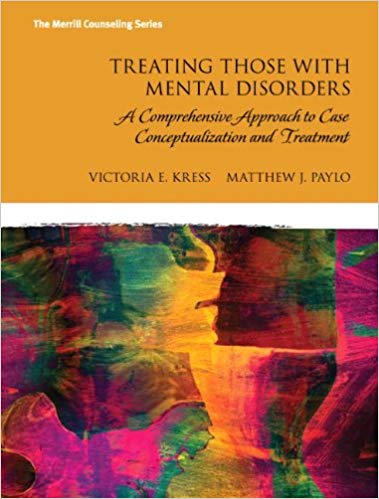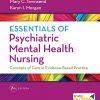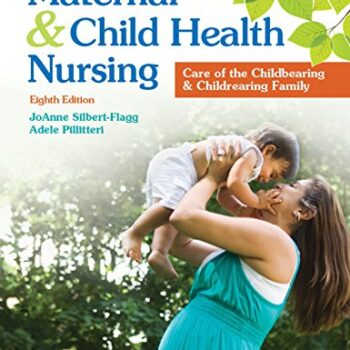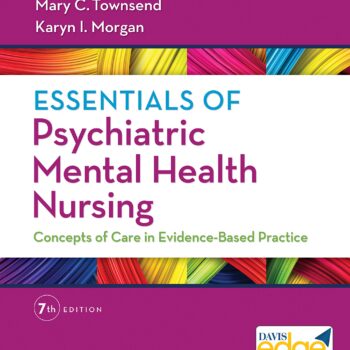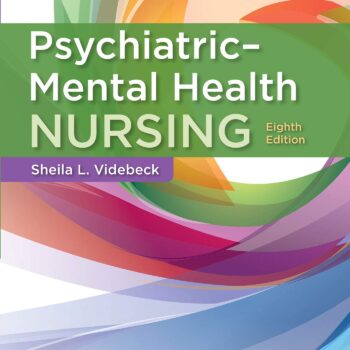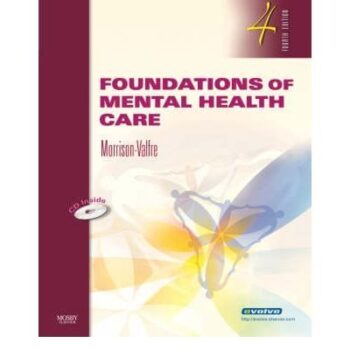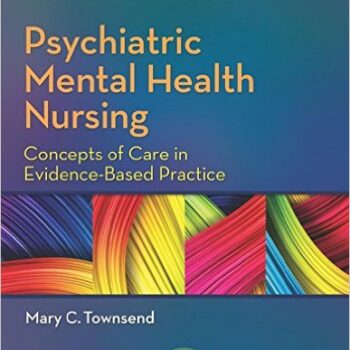Treating Those With Mental Disorders A Comprehensive Approach To Case Conceptualization And Treatment 1st Edition by Victoria E. Kress Test Bank
Table of Contents
Course Syllabus 1
Chapter Discussion Questions and Activities 9
Chapter 1: Developing Effective Treatment Plans 9
Chapter 2: Real World Treatment Planning: Systems, Culture, and Ethics 9
Chapter 3: Safety-Related Clinical Issues and Treatment Planning 10
Chapter 4: Depressive, Bipolar, and Related Disorders 11
Chapter 5: Anxiety Disorders 11
Chapter 6: Obsessive-Compulsive and Related Disorders 12
Chapter 7: Trauma- and Stressor-Related Disorders 13
Chapter 8: Substance-Related and Addictive Disorders 14
Chapter 9: Personality Disorders 15
Chapter 10: Schizophrenia Spectrum and Other Psychotic Disorders 16
Chapter 11: Feeding and Eating Disorders 16
Chapter 12: Disruptive, Impulse-Control, Conduct, and Elimination Disorders 17
Chapter 13: Neurodevelopmental and Neurocognitive Disorders 18
Chapter 14: Dissociative Disorders and Somatic Symptom and Related Disorders 19
Chapter 15: Sleep-Wake Disorders, Sexual Dysfunctions, Paraphilic Disorders, and Gender Dysphoria 20
Additional Case Studies 21
Chapter 4 Case Study: Chad 21
Chapter 5 Case Study: Joseph 23
Chapter 6 Case Study: Cindy 25
Chapter 7 Case Study: Janet 27
Chapter 8 Case Study: Michelle 29
Chapter 9 Case Study: Courtney 31
Chapter 10 Case Study: Elena 34
Chapter 11 Case Study: Denine 36
Chapter 12 Case Study: Sachin 38
Chapter 13 Case Study: Tonya 40
Chapter 14 Case Study: Maria 42
Chapter 15 Case Study: Juan 45
If you are a student or a newfound counselor who seeks to expand your knowledge about mental illnesses and their treatment, the book, Treating Those with Mental Disorders: A Comprehensive Approach to Case Conceptualization and Treatment by 1 Victoria E. Kress is greatly helpful. Concerning the test, it was created expressly for the book, and it will assist in broadening your comprehension of the learning material. Let me take you through its features as well as how it can work for you in practice.
Understanding the Test Bank for Treating Mental Disorders
Understanding the test bank for treating this book does help students appreciate the ideas fleshed out in the textbook as it has numerous case studies and practice questions. It encompasses numerous disorders and various treatment paradigms based on DSM-5. No matter studying depressive disorders, anxiety, substance abuse, or schizophrenia, the test bank guarantees the case application of all the theoretical knowledge learned.
Elements of the Test Bank
The test bank in an understandable manner applies to life. The integration of the test bank with the relevant chapters of the textbook in terms of the major categories of mental health disorders such as bipolar, personality disorders, trauma-related, and eating disorders enhances the quality of learning. It is also a perfect way to improve your clinical judgment as you are given a chance to answer specific multiple-choice questions, case analysis, and numerous review questions about the relevant content. In a way, this brings creative engagement and helps foster continuous hands-on clinical judgment improvement.
A Case for the Use of the Test Bank
The mental test bank used for Treating Those with Mental Disorders has some advantages:
- Active Learning: Besides affirming the knowledge, the test bank assists active learning by serving as a challenge to apply the knowledge in areas that need improvement.
- Practical Application: It equips you with clinical skills like case studies and treatment strategies on how to use concepts in practical clinical work.
- Comprehensive Coverage: Most importantly, the test bank includes all the important parts of the book including the DSM-5 criteria which is relevant to every practitioner and counselor.
- Improved Retention: The use of numerous clinical cases and questions provides repeated testing that allows retention and understanding to be well enhanced.
- Exam Readiness: If you are ready for a counseling exam or a clinical certification then the test bank is a great tool for practicing and planning the real-world application of ideas.
Benefits of Using Test Banks
By using the test bank for this textbook, you are doing more than simply recalling information. You are utilizing your knowledge in real-life situations. The test bank makes it easier for you to devise ways of treating individuals whose mental illnesses are complicated. Such preparations are important for any individual aspiring to work in the area of mental illnesses as it aids one in gaining practical experience while classifying the most important theoretical concepts.
What is the point of using the Test Bank?
The test bank for Treating Those with Mental Disorders is not just a bank of different types of questions. This is a tool that helps you organize interactions with the material that you are studying. This test bank helps you grasp the underlying Strengths Perspective approach to treatment and case conceptualization by incorporating I CAN START model questions and real-life experiences and clinical applications. It also makes the learning of complicated mental health concepts easier and less intimidating.
Conclusion
The Treating Those with Mental Disorders A Comprehensive Approach to Case Conceptualization and Treatment test bank contains priceless information, especially for students and fresh counselors. This test bank has a wide coverage of mental health disorders, treatment, and diagnostic approaches which are developebyth the contents of the textbook. By actively engaging with the test bank, you will improve your performance in exams, improve your confidence in clinicaldecision-makingg, and generally be more helpful to people with mental disorders.

